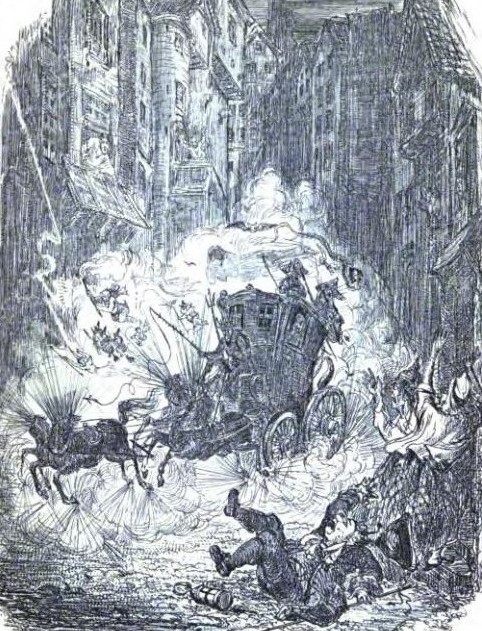Who Were Scotland's Witches?
8th Jun 2021Who Were Scotland’s Witches?
Written by Mercat Tours Storyteller Simon Bendle
You’re likely to hear plenty about witches if you join one of our ghost tours or underground tours. Who they were, why they were targeted, what happened to them when they were convicted. Sometimes their stories are so bizarre you almost want to laugh.
Major Thomas Weir, for example – the so-called Wizard of the West Bow – was said to have derived his evil powers from a demonic walking stick.
Janet Horne, the last Scot executed for witchcraft, was alleged to have turned her daughter into a pony and ridden her to the devil.
The warlock Dr John Fian was accused of accidentally bewitching a cow.

Women vulnerable to diabolical temptation
But of course beneath the black comedy there lies true horror. These were real people – living men and women - with colour in their cheeks, worries on their shoulders, and love in their hearts, just like the rest of us. Most were guilty of nothing more than being elderly, or a little odd, or of having mysterious knowledge of herbal cures and folk remedies.
@mercattours Replying to @JustLaura Geillis Duncan was not just a fictional character! Many people recognise her name from the series, Outlander. But Geillis Duncan was a real victim of the Scottish Witch Trials. She was NOT a villain. A young woman, she was a servant in 1590 when she was accused of witchcraft and...’interrogated’ by her master. She implicated others (like Agnes Sampson and John Fian) in a forced confession. The Scottish Witch Trials were far worse than the well-known Salem Witch Trials: nearly 300 people were executed at Edinburgh Castle alone, whereas 19 were executed in Salem. We’re glad that Geillis Duncan has become a bit of a household name, but we also think it’s important to recognise and respect her real story as well. Please, join us this summer on a Witches: Trial & Truth tour to learn more about the real people accused of witchcraft in Scotland (and to hear centuries of myths dispelled). Tickets through our bio. ✨ [Video description: a 1-minute video exploring the Scottish Witch Trials and the story of Geillis Duncan, using animations and old documents to illustrate a voiceover. End description] #edinburgh #scotland #historytok #hiddenhistory #hiddengems #darkhistory #witchcraft #witchtrials #witchtok #outlander #geillisduncan ♬ original sound - Mercat Tours
Many were horrifically tortured before being burned. All were victims of catastrophic miscarriages of justice. It’s also important to remember that the vast majority of those executed for witchcraft were women - around 80 percent – reflecting a deep misogyny at the heart of early modern society. Women were seen as being morally weaker than men and therefore more vulnerable to demonic temptation. And it wasn’t just elderly women who were persecuted – old, young, rich and poor alike were sent to the stake.
Executions on Edinburgh’s Castle Hill
It’s estimated that 100,000 people were killed in the witch crazes that swept through Europe between the mid-1500s and mid-1700s. Perhaps 2,000 of those were Scots, and 300 of them were burned on Castle Hill at the top of Edinburgh’s Royal Mile. Today a wee fountain known as the Witches’ Well is mounted on a wall up there – a sad and sobering reminder of Scotland’s horrifying witch-hunting past.
In next Thursday's blog we'll explore the two different types of witches and magic it was believed existed. Sign up for our newsletter here to be one of the first to receive it. You can also hear more about Scotland’s witches on our ghost and underground vaults tours.

